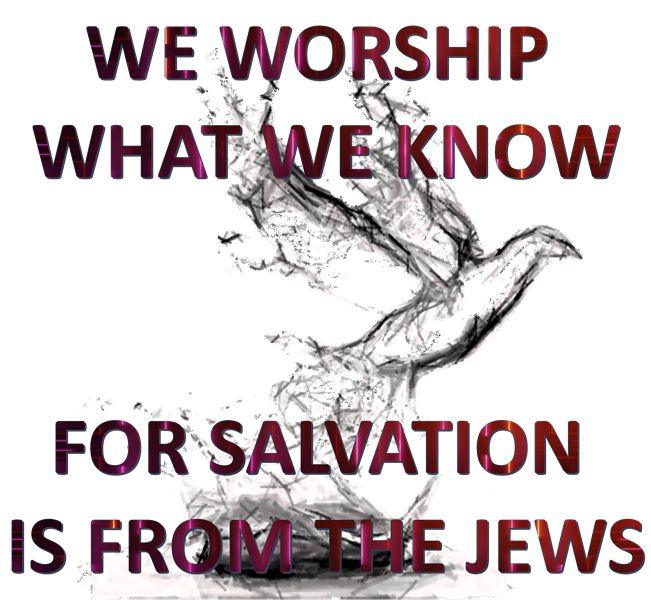
This Devotional message is part of the Clayton Church Value-Based Discipleship series, which was launched on Sunday 23 July 2017. View the series index here.
Passage: John 4:1-30 & 39-42
Now when Jesus learned that the Pharisees had heard that Jesus was making and baptizing more disciples than John (although Jesus himself did not baptize, but only his disciples), he left Judea and departed again for Galilee. And he had to pass through Samaria. So he came to a town of Samaria called Sychar, near the field that Jacob had given to his son Joseph. Jacob’s well was there; so Jesus, wearied as he was from his journey, was sitting beside the well. It was about the sixth hour.
A woman from Samaria came to draw water. Jesus said to her, (For his disciples had gone away into the city to buy food.) The Samaritan woman said to him,
How is it that you, a Jew, ask for a drink from me, a woman of Samaria?
(For Jews have no dealings with Samaritans.) Jesus answered her,
If you knew the gift of God, and who it is that is saying to you, ‘Give me a drink,’ you would have asked him, and he would have given you living water.
The woman said to him,
Sir, you have nothing to draw water with, and the well is deep. Where do you get that living water? Are you greater than our father Jacob? He gave us the well and drank from it himself, as did his sons and his livestock.
Jesus said to her,
Everyone who drinks of this water will be thirsty again, but whoever drinks of the water that I will give him will never be thirsty again. The water that I will give him will become in him a spring of water welling up to eternal life.
The woman said to him,
Sir, give me this water, so that I will not be thirsty or have to come here to draw water.
Jesus said to her,
Go, call your husband, and come here.
The woman answered him,
I have no husband.
Jesus said to her,
You are right in saying, ‘I have no husband’; for you have had five husbands, and the one you now have is not your husband. What you have said is true.
The woman said to him,
Sir, I perceive that you are a prophet. Our fathers worshiped on this mountain, but you say that in Jerusalem is the place where people ought to worship.
Jesus said to her,
Woman, believe me, the hour is coming when neither on this mountain nor in Jerusalem will you worship the Father. You worship what you do not know; we worship what we know, for salvation is from the Jews. But the hour is coming, and is now here, when the true worshipers will worship the Father in spirit and truth, for the Father is seeking such people to worship him. God is spirit, and those who worship him must worship in spirit and truth.
The woman said to him,
I know that Messiah is coming (he who is called Christ). When he comes, he will tell us all things.
Jesus said to her,
I who speak to you am he.
Just then his disciples came back. They marveled that he was talking with a woman, but no one said, “What do you seek?” or, “Why are you talking with her?” So the woman left her water jar and went away into town and said to the people,
Come, see a man who told me all that I ever did. Can this be the Christ?
They went out of the town and were coming to him.
…
Many Samaritans from that town believed in him because of the woman’s testimony, “He told me all that I ever did.” So when the Samaritans came to him, they asked him to stay with them, and he stayed there two days. And many more believed because of his word. They said to the woman,
It is no longer because of what you said that we believe, for we have heard for ourselves, and we know that this is indeed the Savior of the world.
Scripture
From this scripture about the Samaritan Woman at the well, the final verse is the punch-line for me in this time of reading, because of the theme of reproducibility being the focus. It highlights that we are to reproduce the act of following Jesus such that future disciples will do likewise and hear for themselves.
My Words
Retelling the story for someone else (you – my audience):
When Jesus heard that his fame had grown to the extent that it exceeded his cousin John the Baptist, he decided to leave Judea for the lakeside region of Galilee, to reduce the growing spotlight of scrutiny. Whilst on the way to his destination of Galilee, he broke journey at a Samaritan town called Sychar, where Jacob’s well is. Around midday, a woman approached the well to draw water and thus this opportunity for interaction arose, particularly while the disciples ventured into the city to procure lunch.
In initiating the conversation, the Samaritan woman questioned the breaking of social and cultural norms in that Jesus, clearly a Jew, was now interacting with her – a Samaritan, let alone a female. Jesus replied to her questioning by inverting her supposition – if she knew his identity, she would be the one asking for a drink instead of him. In Jesus’ reply, he does not just say any water but specifically “living water”. The woman initially considers his response from a logistical perspective – Jesus did not have the physical container for drawing water and the depth of the well was also a barrier physically. She then moves on to the final words of “living water” – its source and implication of who Jesus was given his offer of living water. The implication of offering living water is that Jesus was effectively claiming to be greater than Jacob, and indeed the God of Abraham, Isaac and Jacob. Jesus taught more on the principles of living water:
Living water will ensure that the drinker never goes thirsty and in need, unlike those that drink normal water, like the water from the well of Jacob. The power of Living water working within the lives of a believer, who accepts the Living water in the first place, will become a fountain reproducing the nature of the Living water.
On hearing this, the heart of the Samaritan woman was moved and she readily requested for the Living water, eager to believe and receive. However, her understanding was only partial because of her focus on not having to be thirsty or have to draw water from the physical well of Jacob. To ensure and improve her understanding, Jesus dug deeper into the life of the woman, asking her to go and bring her husband to them. The woman claimed that she had no husband to which Jesus replied with the exact state of her condition – having married previously five times, and her sixth relationship was with a man who was not her husband.
On hearing Jesus accurately describe her life, she knew that he was indeed a Holy and Anointed man of God. The next objection the Samaritan woman raised was to highlight the differences that separated Samaritans from Jews – the location of the Chosen Place to worship God: Mount Zion in Jerusalem for Jews or Mount Gerizim for Samaritans. Jesus addressed this issue but making it a non-issue: the future faith was fast approaching where the location of where people gathered to worship would become irrelevant. Instead, through the path to salvation and the knowledge that possessing the Living water would bring, believers would worship God in spirit and truth.
Upon hearing this the woman shared her knowledge that she knew of the coming Saviour who would come and teach all people. Jesus confirmed for her this suspicion and claimed the title for himself – I am the person you speak of. Just as this revelation was made, the disciples returned to join Jesus. They were astonished at the interaction taking place between the Samaritan woman and Jesus, a Jewish man, although their focus was more so on Jesus rather than the woman. This exclusion by the group provided the woman with an opportunity to leave them and her return to the town and spreading of the news of her experience with Jesus. As she shared the news, the curiousity of the local townspeople was piqued and they ventured out to meet Jesus and the disciples.
…
A large number of the local Samaritans were convinced for themselves that Jesus indeed was the Messiah and the woman’s testimony played a key role in influencing them in this way – the fact that Jesus could discern her past and speak so directly into her current situation was convicting. As a result of this belief, they extended their hospitality to Jesus and he took them up on this offer by staying for two days. With a local base in the Samaritan town, the number of believers and followers grew. These new believers, whilst acknowledging the initial role the woman’s testimony played, came to believe because of the direct connection they established with Jesus himself. Through this direct relationship with Jesus they knew that He was without a doubt the prophesied Messiah.
What I Discovered
Insights revealed by this passage include:
- Jesus had sent the disciples off to get food. This task was given to the entire group so that Jesus would be alone, setting up the opportunity for interaction with the local Samaritan woman. If some of the disciples had stayed back with Jesus, the woman would have not approached the well, as was the social norms of the day.
- Although Jesus explained the concept of Living Water, my interpretation of the passage gives me the impression that the Samaritan woman did not actually understand what Jesus was saying, as reflected in her question and focus – give me your water so that I do not need to come and draw water from this well again. This interpretation is reflected in my retelling of the passage above.
- The principle and theme of reproducibility is most visible in the final verses where the local townspeople who become believers initially believed and were indirectly connected to Jesus via the woman’s testimony and sharing, but quickly became directly connected to him and his teaching. The conclusion is that the woman was practicing a form a simple discipleship, but clearly was pointing them to Jesus and not herself. Her simple disciple-making approach was to tell people of her encounter with Jesus, and tell them that she thought he was the Messiah. The people, in hearing this went to investigate for themselves, encountered Jesus and become followers.
Obedience Step
“I Will”
I will not over-complicate the message of the Gospel, which is in fact quite simple and straightforward: believe in and follow Jesus, follow His commandments: to love one another, to love your neighbour as yourself, and to love your enemies.
Threadless Artist Shop Design
Today’s devotion is summarised in the single design graphic above, has been added to my Threadless Artist Shop under the collection Discipleship Devotionals. This design continues an evolution in that the artwork dimensions are more vertical than horizontal as originally laid out. This is intentional as I continue to learn and understand more about the space available for designs to be positioned on the various apparel, home-ware and accessories.

1 comment
Comments are closed.